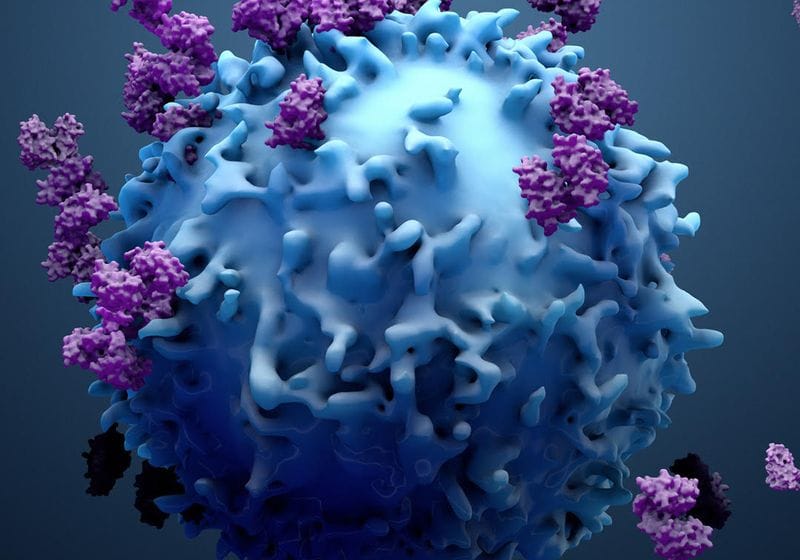BATMAN Signals T Cell Receptor Crossreactivity

A model to predict T cell receptor-antigen peptide pair interactions can help avoid off-target T cell activation and develop targeted immunotherapy approaches.
Protein complexes that adorn the surface of T cells—T cell receptors (TCRs)—act like molecular patrol officers, scanning cells for potential threats. When these receptors recognize short peptide sequences, they sound an alarm, activating T cells to clear the threat.
Scientists have been trying to leverage this TCR property for immunotherapeutic purposes, wherein engineered T cells would bind to specific cancer-associated peptides.1 However, a single TCR can recognize a variety of peptides that share similar sequences, which could lead to T cells attacking healthy cells. Predicting interactions between TCRs and antigen peptides could help avoid such friendly fire.
Recently, a team led by cancer immunologist Hannah Meyer and systems biologist Saket Navlakha at Cold Spring Harbor Laboratory curated a database of TCR-peptide interactions.2 They then trained an AI model on this database to predict the peptides that would activate a TCR. Their results, published today in Cell Systemscan guide the development of TCR therapies with limited off-target effects.
To assemble their database, Meyer, Navlakha, and their team collected information from multiple previously-published articles where researchers had assessed the impact of sequence variants on TCR activation in mice and humans. The resulting database, Benchmark for Activation of T-cells with Cross-reactive Avidity for Epitopes (BATCAVE), contains more than 20,000 TCR-peptide interactions from 25 sequences.
The researchers used BATCAVE to study how different factors, including the strength of the TCR-peptide binding, biochemical properties of the amino acids involved, and sequence-changing mutations affect TCR activation. This validated the potential of the database for predicting TCR-peptide interactions.
Next, Meyer, Navlakha, and their team used BATCAVE as a benchmarking dataset to evaluate how well existing models predicted whether mutant peptides would activate TCRs. Since these models performed poorly, the researchers set out to build an improved model for predicting how peptide mutations affect TCR activation.
Using BATCAVE, the researchers trained a machine learning model that they called BATMAN, short for Bayesian Inference of Activation of TCR by Mutant Antigens. BATMAN accurately predicted which peptides would bind to a given TCR, and how mutations in the sequence would affect this binding. Comparing BATMAN with an existing model trained on BATCAVE revealed that it outperformed the existing model in predicting the effect of peptide mutation on TCR activation.
“It’s not enough to just count differences between potential targets,” said Meyer in a press release. “It matters where the difference is and what type of difference it is.”
So, the researchers assessed how different mutations at various amino acid positions influenced TCR-peptide interactions. Scoring binding against each peptide position revealed that central amino acid residues affected TCR binding more compared to flanking residues. BATMAN also identified how structural features of altered amino acids influenced TCR binding: Introducing cysteine in place of valine, glutamine, or serine increased TCR activation. Swapping hydrophobic amino acid residues with non-hydrophobic ones also activated TCRs. Overall, this revealed that BATMAN learned biologically relevant parameters to offer insights on the nature of TCR-peptide interactions.
“Our model is already good enough to tell us if there are peptides we should be concerned about for targeted (cancer) therapies,” said Meyer. However, the authors noted that the tool needs more work for potential clinical applications, including training it on larger and wider datasets to capture the thousands of other TCR-peptide interactions that take place in the body.




